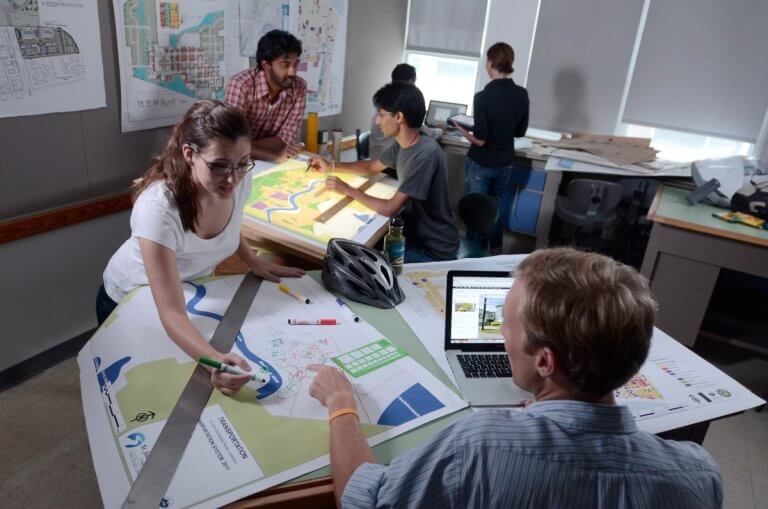
As the global climate situation continues to change, scientists become more able to link the increase in weather-related disasters to climate change and make predictions for the future. Researchers from the Energy and Climate Intelligence Unit conclude that 41 of 59 climate change and extreme weather studies demonstrate that climate change has made extreme weather events more intense and long-lived.
Not only this, but the number of weather-related natural disasters is increasing. Since 1970, the number of natural catastrophes worldwide has more than quadrupled to around 400 a year. The US, along with China and India, have become particularly vulnerable, suffering the greatest number of natural disasters globally between 1995 and 2015, according to the UN’s disaster-monitoring system.
Climate scientists are predicting that 2018 will be the fourth-hottest year on record, with above average temperatures across Europe during the summer months. Meanwhile wildfires were raging across Western Canada and the US. A number of bizarre and at times, damaging weather events have already occurred, including cyclones, enormous thunderstorms and orange snow.
New Orleans is a city particularly familiar with the devastation caused by extreme weather conditions, after 134,000 homes and 1,500 lives were lost during 2005’s hurricane Katrina; a category 3 hurricane when it reached Louisiana, that overwhelmed manmade walls meant to keep huge surges of water from the Gulf of Mexico at bay.
With increasing natural disasters comes a heightened need for sustainable aid, resilience efforts and research strategies. Organisations such as UNICEF provide aid across the globe. But graduates of Urban Studies programs are the ones who produce strategies that tackle natural, environmental and technological risks, focussing on mitigation, sustainability and resilience efforts.

Source: University of New Orleans
The Planning and Urban Studies Department (PLUS) at the University of New Orleans is a diverse academic unit, with a PhD in Urban Studies, three masters’ degrees (transportation, urban and regional planning, and urban studies), graduate certificate programs in Historic and Cultural Preservation, Geographic Information Systems (GIS), and Disaster Management and Community Resilience, as well as an undergraduate degree in urban studies and planning. The Urban Studies Master’s program in the PLUS interdisciplinary program is built around core knowledge of urban literature and research methods, helping students engage in the study of cities and urbanization processes.
Following successful completion of the core courses, students will have the opportunity to develop their own curricula, centering on a particular area or research interest they will expand on in their thesis.
The approach in PLUS considers student researchers as integral to all its research projects. Learners are involved throughout the course of each project, with the opportunity to conduct fieldwork, participate in community meetings, present at academic and professional conferences, and publish in academic journals. Much like faculty and staff, students represent various academic disciplines at UNO.
Besides the UNO Transportation Institute, the unit hosts CHART, the Center for Hazards Assessment, Response and Technology.
UNO-CHART is well placed to teach Urban Studies students in the context of environmental risks throughout the region. Its mission? To assist residents, local and state officials, and communities in understanding and reducing risk to hazards, also encouraging collaboration with similar programs across the country.
CHART has completed a wealth of impactful research projects relating to Community Education and Outreach, for which they have been funded. These projects intended to inform citizens, business owners, non-profit organizations, and local officials on the ways in which these risks can be reduced through multiple mitigation methods.
Another current project aims to support Louisiana’s coastal indigenous communities and inform their response to natural and technological disasters, and adaptation to climate change. The project team plans to collaborate with two United Houma Nation communities, documenting how environmental stressors affect their livelihoods and shape the mitigation strategies they use to protect their coastal lands.

Source: University of New Orleans
Using traditional ecological knowledge in collaboration with the tribe, researchers will examine local adaptation plans and current mitigation efforts in order to understand the tribe’s adaptive capacities now and in the future.
The ultimate aim here is to produce a resource that can be used by the United Houma Nation and other indigenous communities facing similar challenges, encouraging planning efforts while increasing communication between communities and policymakers.
The center has produced resources such as a Disaster Toolkit, offering easy to read advice for everyone from businesses to individuals, families and non-profits about every aspect of natural disaster, including mitigation, preparedness, response, recovery and different types of weather-related events.
Students come to the UNO PLUS from around the world to contribute to risk mitigation through the Urban Studies Program. For example, Bradley Spiegel, originally from the suburbs of Chicago, was inspired to relocate to New Orleans after volunteering multiple times after Hurricane Katrina. Bradley is currently enrolled in the Master’s program in Urban and Regional Planning at UNO, specializing in Land Use and Urban Design.
UNO’s centers, such as the Center for Hazards Assessment, Response and Technology, and graduates of Urban Studies can help us prepare for future weather-related disasters, mitigate the risk of their catastrophic impacts and educate local communities.
With the number of natural disasters rising worldwide, graduates of Urban studies are helping communities be more prepared than ever before. The strategies they create ultimately save lives.
Follow UNO-CHART on Facebook, Tumblr and LinkedIn
Liked this? Then you’ll love…
Structuring our cities: 5 global leaders of Built Environment education
Learn and thrive in a living lab: Top locations for planning and urban studies







